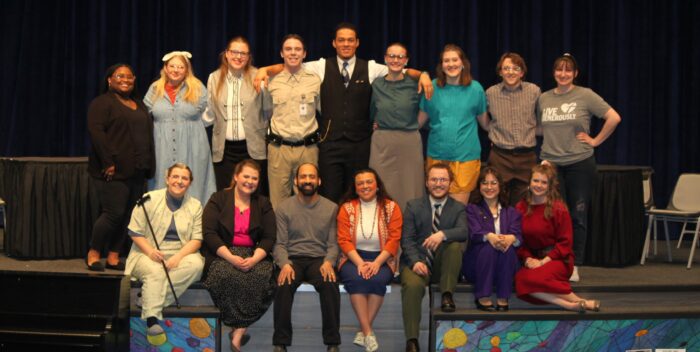“12 Angry Jurors” shows how emotions can get in the way of reason
Photo description: The cast and crew of “12 Angry Jurors” pose post-show
Photo credit: Kayla Korb
Meredith Boster
Sower Staff
Professor of Communication & Theatre Arts Bryan Moore said he chose “12 Angry Jurors” for Concordia’s spring play because he wanted to “show how our emotions can get in the way of reasonably considering facts and other people’s perspectives.”
The play reflected “many conversations in our society, and our ability or inability to rationally talk and converse with each other in many situations,” Moore said.
“12 Angry Jurors” cast a light on how prejudices affect the way that we see data and interpret events, as well as communicating the reality of how the heat can affect tensions among people. It takes place in a jury room on a hot summer evening in New York in 1957. The audience is not given any context as to who the person on trial is, aside from references to “him” and “murderer,” as well as evidence about how the murder occurred.
Costumes for the performance were accurate to both the time period and the characters, encapsulating each character’s unique attributes and portraying their inner characteristics. The set, while simple, was highly functional as a jury room and the cast used the room to their advantage.
Moore wanted the audience to become “willing to listen to each other’s points of view in a respectful way” and to “consider the facts of a situation as opposed to letting emotions blind the way they view circumstances.”
Moore said the most challenging part of the show was getting the cast to “portray realistically the emotions and personalities they are presenting.” He made the distinction between being realistic and being over-the-top, and he said that between those two ideas there is a fine line that he hopes that the cast avoided.
He said that when watching the show, he “loved watching the flow of the argument” and added the flow gets faster as the play goes along. “You want to take the audience on this ride, like a roller coaster,” he said. “You have to get that momentum built up, and once it goes and they take off – that’s my favorite part.




















